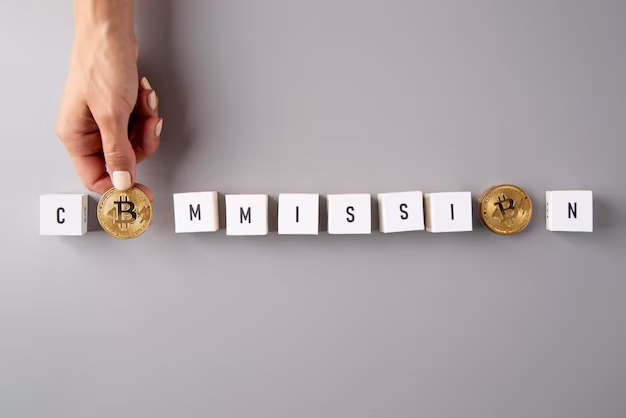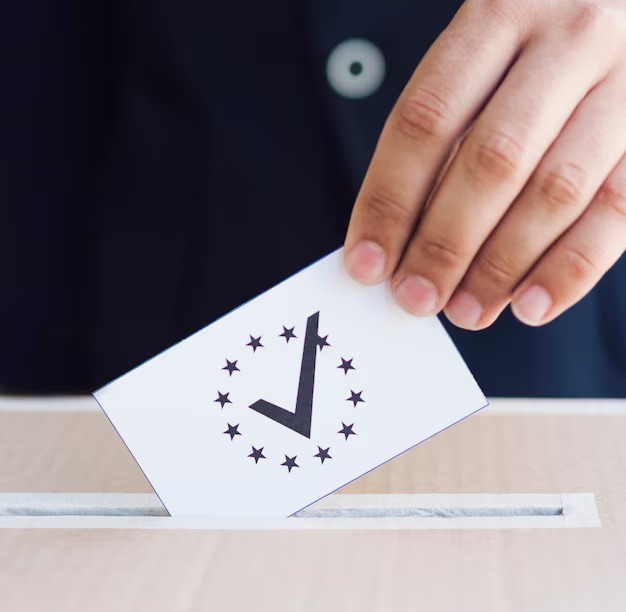
Understanding Trademark and Copyright Implications for NFTs and intellectual property in 2024
Understanding Trademark and Copyright Implications for NFTs and intellectual property in 2022
As the digital landscape evolves, new forms of creativity emerge, bringing with them a host of legal intricacies. The intersection of art and technology has given rise to unique digital assets that not only transform ownership concepts but also pose questions regarding protection and infringement. Artists, collectors, and investors alike find themselves navigating this uncharted territory, where the rules of intellectual property must adapt to the innovations of the digital age.
In this dynamic environment, it becomes crucial to understand the implications of existing protective measures on the virtual creations we cherish. The unique nature of these digital commodities raises essential inquiries regarding authenticity, exclusivity, and the rights of creators and consumers. As stakeholders engage in this burgeoning marketplace, their awareness of the legal frameworks at play will not only safeguard their interests but also promote a healthier ecosystem for digital expression.
With the rapid expansion of this cutting-edge domain, it is imperative to explore the various legal frameworks governing unique digital creations. By delving into the specific aspects of ownership, usage rights, and potential liabilities, one can gain insights into effectively navigating this multifaceted landscape. Thorough comprehension of these elements is fundamental for anyone involved in the creation, exchange, or collection of these modern marvels.
Understanding NFTs: A Legal Overview
In recent years, a unique digital phenomenon has emerged, capturing the attention of creators, collectors, and investors alike. This innovative asset class offers a new way to represent ownership and value in a digital realm. However, with its rapid rise, there come various legal ramifications that warrant attention from multiple perspectives.
The essence of these digital creations lies in their ability to signify authenticity and ownership through a decentralized ledger. This technology provides a framework that challenges traditional notions of property rights and raises important questions about how existing laws apply to this novel medium. Understanding the legal landscape is crucial for anyone involved in the buying, selling, or creation of these assets.
Key issues arise when considering the rights associated with the digital items linked to these assets. While the asset itself demonstrates ownership through unique identifiers, the relationship between the underlying content and the rights of the original creators can often be ambiguous. Legal frameworks must evolve to address these complexities, ensuring that creators retain their rights while providing clarity for purchasers regarding what they are truly acquiring.
Furthermore, the intersection of intellectual property and blockchain technology introduces additional layers of complexity. As different jurisdictions approach regulation in varying ways, it becomes essential for stakeholders to navigate this landscape diligently to safeguard their interests and comply with applicable laws. In this ever-evolving arena, awareness of potential liabilities and the need for informed decision-making are more vital than ever.
Intellectual Property Rights in Digital Assets
The rapid evolution of the digital landscape has introduced new complexities surrounding ownership and protection of creative works. As virtual assets gain prominence, the importance of understanding how rights apply to these intangible items becomes increasingly critical. Artists, creators, and investors must navigate the intricate web of legal frameworks to ensure their innovations remain safeguarded.
Within this context, the differentiation between the asset itself and the underlying rights is pivotal. An individual may possess a digital asset, yet this ownership does not automatically confer rights to the content associated with it. Clear comprehension of the rights linked to various types of digital creations is essential to avoid unintentional infringements and to uphold the interests of both creators and consumers.
As such, it is vital for stakeholders in the digital realm to educate themselves on the existing legal protections available for their work. This includes exploring how existing laws apply to the creation, distribution, and monetization of digital assets. By doing so, creators can better defend their works while also respecting the rights of others in this burgeoning sector.
How Copyright Affects NFT Creators
The realm of digital assets has opened new avenues for creators, but it also introduces complexities regarding ownership and usage rights. As artists and developers venture into this innovative space, they must navigate the intricate web of protections that influence their work and its value in the marketplace.
Understanding the implications of intellectual property laws is crucial for those producing unique digital tokens. When creators mint their pieces, they may inadvertently expose themselves to potential disputes if they fail to acknowledge existing rights associated with underlying materials. This awareness is particularly vital when it comes to using elements such as images, music, or literature created by others.
Moreover, original content gives artists a significant advantage in establishing their authority over their creations. When a piece is crafted from scratch, the creator retains control over its distribution and reproduction, which can enhance its desirability among collectors. In contrast, unauthorized use of protected works can lead to legal ramifications, thereby impacting the creator’s reputation and financial gains.
In summary, a firm grasp of ownership principles empowers creators to maximize their potential within this evolving marketplace. By respecting existing rights while leveraging their originality, artists can ensure their contributions are both legally sound and commercially viable.
Trademark Issues Surrounding NFT Marketplaces
The emergence of digital assets has led to various legal challenges, particularly concerning the ownership and protection of unique symbols, logos, and identifiers. As these assets gain popularity, the intersection of digital property rights with virtual platforms raises crucial questions about the responsibilities of marketplace operators and buyers. This environment necessitates a careful examination of how enterprises safeguard their identities in the rapidly evolving landscape.
Conflicts Over Identity Protection
With an increasing number of creators minting digital items, instances of identity infringement are on the rise. Various companies are taking legal actions against individuals or entities that misappropriate their identifiers through various virtual markets. These conflicts not only harm the original creators but also undermine the integrity of the marketplaces themselves.
Marketplace Liability
Marketplace operators face significant challenges related to liability for unauthorized use of identifiers by users. Establishing a balance between fostering a free digital community and protecting brands’ rights is essential. Operators often must implement effective mechanisms to address infringement complaints and enforce appropriate actions to protect original creators.
| Issue | Description |
|---|---|
| Infringement | Unauthorized use of established identifiers by creators in virtual spaces. |
| Market Responsibility | Obligations of platforms in managing potential identity misuse by users. |
| Legal Recourse | Actions companies may take against unauthorized uses that harm their brands. |
Licensing Agreements and NFT Transactions
The intersection of digital assets and legal frameworks creates a complex landscape for creators, collectors, and investors. As virtual items gain traction, understanding the agreements that govern their use becomes crucial. These arrangements define the scope of user rights, the extent of ownership, and potential monetization avenues, thereby shaping the relationship between creators and their audience.
Types of Licensing Models
Various models facilitate the exchange of rights between parties. Exclusive licenses grant full rights to a single entity, while non-exclusive agreements allow multiple individuals to access the same asset. Additionally, limited licenses restrict the use of an asset to specific contexts, ensuring creators retain control over how their work is disseminated. Understanding these distinctions can empower participants in the digital marketplace and influence the value of an item.
The Role of Smart Contracts
Smart contracts play a pivotal role in the execution of agreements in the digital sphere. By automating terms of use and transaction protocols, they enhance transparency and reduce the risk of disputes. Furthermore, they can include provisions for royalty payments, ensuring that original creators benefit from secondary sales. This technological advancement not only simplifies interactions but also fosters trust within the community.
Potential Legal Challenges for NFT Owners
The ownership of digital assets has surged in popularity, yet it also introduces a myriad of potential legal hurdles that must be navigated. These challenges can arise from various aspects, including intellectual property issues, ownership rights, and the implications of transaction agreements. The complexities can sometimes obscure the path for individuals and businesses venturing into this innovative space.
Intellectual Property Conflicts
One of the primary areas of concern involves the rights associated with the digital items themselves. Owners may face challenges such as:
- Lack of clarity regarding ownership and usage rights.
- The risk of infringing on the rights of creators if the original work is used without permission.
- Potential disputes with existing rights holders who may claim prior ownership.
Contractual Obligations
Many transactions in the digital asset marketplace involve contracts that outline the responsibilities and rights of each party. Potential legal challenges include:
- Ambiguities in the terms of service that may lead to misunderstandings.
- Liability for misrepresentation or failure to disclose important information.
- Enforcement difficulties concerning agreements made in decentralized platforms.
As the landscape evolves, it remains critical for holders of digital items to be informed about their legal standing and possible implications of their ownership, ensuring they can effectively navigate these complicated waters.
Best Practices for Protecting Digital Creations
In an increasingly digital world, safeguarding your creative works is essential. When sharing or monetizing original content online, certain strategies can help ensure that your innovations remain secure and your rights as an creator are upheld. By implementing these measures, you can mitigate risks associated with unauthorized use and ensure that your creations retain their value.
1. Document Your Work
Maintaining thorough records of the development process is crucial. Keep drafts, notes, and any relevant documentation that can establish the timeline of creation. This evidence can serve as a vital tool in case of disputes over originality or ownership, reinforcing your claim to the work.
2. Use Digital Signatures and Watermarks
Adding digital signatures or watermarks to your creations can deter misuse. These markers can include identifying information or unique codes that not only affirm ownership but also trace any instances of infringement. Incorporating such features into your work can promote accountability and discourage potential infringements.
Q&A: Trademark copyright considerations nfts 2022 5 2
What are the key IP issues related to NFTs in the metaverse?
IP issues related to NFTs in the metaverse often involve trademark rights and the potential for cybersquatting. As non-fungible tokens gain popularity, it is essential for creators and brands to understand how to protect their assets associated with an NFT.
How did the USPTO address trademark applications for NFTs in 2021?
In 2021, the USPTO began receiving an increasing number of trademark applications specifically relating to NFTs. This trend highlighted the growing recognition of non-fungible tokens as valuable assets that require trademark registration to protect brand identity and rights.
What is the significance of Mason Rothschild’s Birkin bag NFT case in 2023?
The case involving Mason Rothschild and the Birkin bag NFT has significant implications for trademark rights in 2023. It raises questions about how IP law will adapt to new technology and the use of non-fungible tokens as digital representations of luxury goods.
How does StockX authenticate NFT-related products?
StockX utilizes a combination of expert verification and technology to authenticate NFT-related products. By ensuring that each asset associated with an NFT is genuine, they help maintain trust in the marketplace for buyers and sellers alike.
What role does the Patent and Trademark Office play in NFT trademark registration?
The Patent and Trademark Office (USPTO) plays a crucial role in NFT trademark registration by evaluating applications that relate to non-fungible tokens. This process helps establish trademark rights that protect brands from infringement and cybersquatting.
What challenges do brands like Nike face regarding IP issues in the metaverse?
Brands like Nike face various IP issues in the metaverse, including protecting their trademarks from unauthorized use in NFT-related projects. The rise of new technology has made it easier for individuals to create NFTs that may infringe on established trademark rights.
How can companies ensure their trademark rights are upheld in 2023?
To ensure their trademark rights are upheld in 2023, companies should actively monitor trademark applications and potential infringements related to NFTs. Engaging legal counsel familiar with IP issues in the metaverse can help them navigate these challenges effectively.
What are the potential consequences of cybersquatting on NFT marketplaces?
Cybersquatting on NFT marketplaces can lead to significant legal repercussions for offenders, including lawsuits from trademark owners. This practice undermines the integrity of brands like Nike and can damage consumer trust in NFT-related products.
Why is it important for creators to secure IP rights for their NFTs?
Securing IP rights for NFTs is crucial for creators because it protects their work from unauthorized reproduction or misuse. Establishing trademark registration through the USPTO helps ensure that their non-fungible tokens maintain value and authenticity.
How has the landscape of trademark applications changed since 2021 regarding NFTs?
Since 2021, the landscape of trademark applications has evolved significantly, with a marked increase in filings related to NFTs. This shift reflects the growing recognition of non-fungible tokens as legitimate assets that require legal protection in today’s digital economy.
What are the primary legal issues surrounding nft intellectual property in the context of nfts and the metaverse?
The primary legal issues include copyright issues related to the owner of the copyright, trademark owners’ marks, and the potential for counterfeit goods. These concerns arise as brand owners navigate the complexities of licensing their trademarks for use in digital goods.
How does the United States Patent and Trademark Office address nft intellectual property concerns?
The United States Patent and Trademark Office has established guidelines to evaluate applications concerning nfts and the metaverse, ensuring that goods and services offered by brands are adequately protected under trademark law.
What role does the Digital Millennium Copyright Act play in protecting nft intellectual property?
The Digital Millennium Copyright Act (DMCA) provides a framework for addressing copyright infringement, allowing copyright owners to take action against infringers who distribute copies of their copyrighted work without permission, including through the use of nfts.
How did Hermès sue Rothschild over the “metabirkins” case impact nft intellectual property rights?
Hermès sued Rothschild over the “metabirkins” case, raising interesting questions about rights in the metaverse and how traditional intellectual property laws apply to digital representations of physical goods, such as luxury handbags.
What is the significance of the subcommittee on intellectual property’s roundtable discussions regarding nfts?
The subcommittee on intellectual property held roundtable discussions in January 2023 to gather insights on the evolving landscape of nft intellectual property, focusing on unresolved legal issues and potential regulatory changes affecting brand owners.
How does minting an nft affect copyright ownership and rights in the metaverse?
Minting an nft may create new challenges regarding copyright ownership, as it includes the right to prepare derivative works and perform the work associated with the original copyrighted material, potentially complicating rights for creators.
What are some common misconceptions about whether nfts can infringe on existing trademarks?
Many believe that nfts cannot infringe on existing trademarks; however, if an nft uses trademark owners’ marks without permission, it can lead to legal issues, especially if it confuses consumers regarding the source of goods and services.
How does the first-sale doctrine apply to nfts and their resale in the digital marketplace?
The first-sale doctrine allows the owner of a physical good to resell that item without permission from the original creator. However, its application to nfts is still unresolved, as digital goods present unique challenges not covered under traditional interpretations.
In what ways are brands beginning to capitalize on nfts for marketing and revenue generation?
Brands are beginning to capitalize on nfts by licensing their trademarks for use in digital art and collectibles, creating exclusive experiences for consumers, and engaging with audiences in innovative ways that leverage blockchain technology.
What impact does the Ethereum blockchain have on the legal landscape surrounding nft intellectual property?
The Ethereum blockchain serves as a foundational technology for many nfts, facilitating secure transactions. However, its decentralized nature raises questions about jurisdiction and enforcement of intellectual property rights, complicating legal issues for brand owners.





